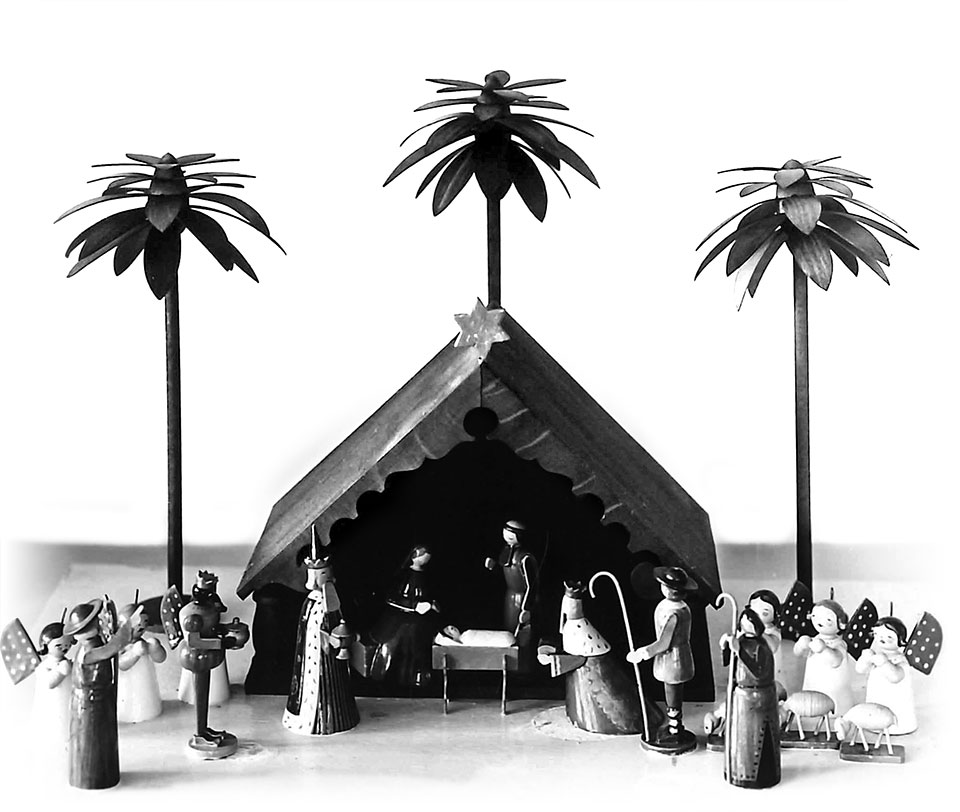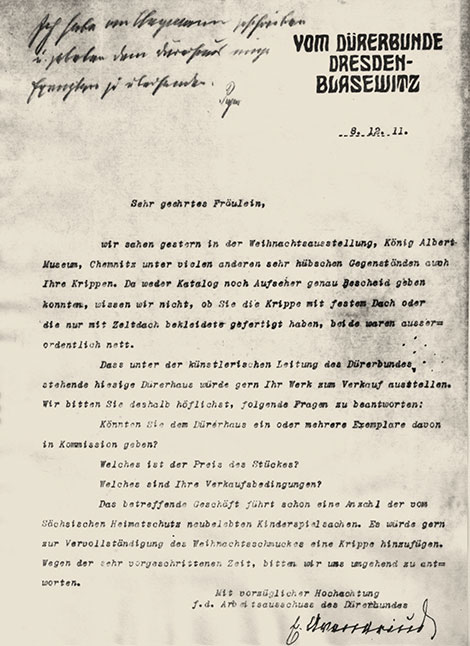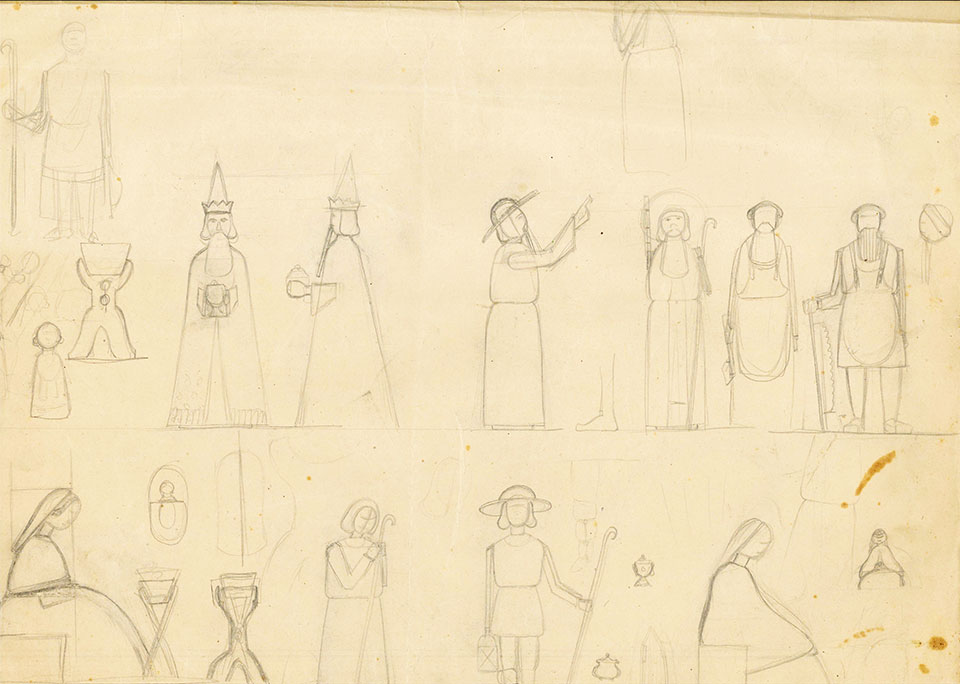
A very special design from our grand design legacy has returned to the Wendt & Kühn collection: The nativity scene. It is not only the contemporary idiom, the simplicity, and at the same time the richness of detail in a number of the figurines that give this extraordinary group their character, it is also their fascinating history.
The nativity scene belongs to the few groups of figurines that Grete Wendt designed before she founded Wendt & Kühn. At the time she was studying at the Royal Saxon Academy of Applied Art in Dresden. The young artist was extremely fortunate to join the first class for women that it had ever offered. Before this, women had been denied access to the academy. The final stage of her course was a practical semester, which Grete Wendt completed at the Deutsche Werkstätten in Hellerau, now a district of Dresden. The company was an aspiring, modern enterprise. A part of the arts and crafts reform movement, it was considered to be one of the most important manufacturers of furniture designed by well-known artists. Founded in 1898, the company moved several times before, in 1909, the foundation stone of a new factory was laid in Hellerau at the same time as work began on the famous garden city of the same name. The factory was commissioned in 1910.
Laid out like an estate, the factory halls and their modern architecture must have made quite an impression on Grete Wendt when, in October 1910, she arrived to start her internship. Karl Schmidt, the founder of the Werkstätten, gave her her first commission - to design a nativity scene. Her design was manufactured externally by the company Th. Heymann in Großolbersdorf, as at the time Grete Wendt did not yet own her own workshops. In 1911, shortly after she had designed the nativity set and the first samples had been made, the talented designer exhibited it at the Christmas exhibition of the King Albert Museum in Chemnitz (today the Kunstsammlungen Chemnitz). During the two-week exhibition her nativity scene attracted much attention from visitors. While the exhibition was still going on, Grete Wendt received a request from the Dürerbund in Dresden to include her nativity scene in the product range of the Dresden Dürerhaus. At the time the Dürerbund was the leading cultural reform organization in the German-speaking world. Even more prestigious for the young designer was the fact that the request came directly from Ferdinand Avenarius, founder of the Dürerbund. At the same time many specialist magazines and daily newspapers reported on the exhibition and they always mentioned the successful design by Grete Wendt from Grünhainichen.
News of Grete Wendt’s talent spread and further commissions followed. The high-level of demand for her first designs, which in addition to the nativity scene include the Angel holding Candles, the Miner and the Berry Pickers was certainly one of the reasons that motivated Grete Wendt and Grete Kühn to found their own manufactory. This meant they were independent of other manufacturers and could organize their sales and distribution better. The nativity scene remained in the collection from 1915, when Wendt & Kühn was founded, until 1949 when it was moved to the Grand Sample Cabinet where it was to spend the following decades. After 72 years, it has now returned to the collection.
Grete Wendt’s design of 1910/11 was way ahead of its time. Its straight lines and minimalist style are akin to the language of form we would first expect from the artists of the Bauhaus in 1919. To this day the group of figurines is characterized by its modern design and impresses us with its clean lines. The color palette completes the composition of the figurines and has been designed to reflect their social standing. Mary, Joseph and the shepherds are shown in simple, modest colors, while the robes of the three wise men make an impression with their rich colors and patterns. The Christ child lies snugly in a crib, wrapped in cloth. The stable, sheep and palm trees complete the scene, surrounded by a multitude of angels. From May 2021, the first figurines of this nativity scene will once again be available: Mary, Joseph, the child in the crib and a nativity angel. Further figurines will be added over the next few years until the scene is complete.



